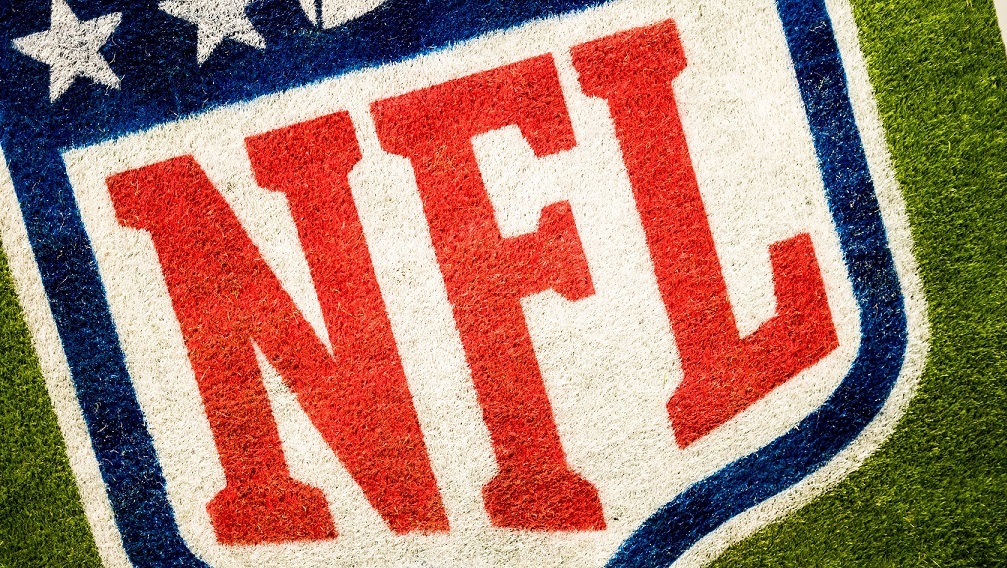Creative Thinking
When to Take a Stand (or Take a Knee): Mixing Brand Activism and Content Marketing
By Taylor Holland on February 2, 2018
Football season is almost over, but it's been one we're sure to remember-if not because of the excitement on the playing field, then certainly because of the drama on the sidelines and social media. However you feel about the take-a-knee protest, you've got to admit that a Twitter war between the NFL and the White House is new and somewhat surreal territory.
The situation also underscores some important truths about the precariousness of brand activism in an era when Americans disagree about so many things, even the definition of patriotism.
Despite numerous appeals from conservative politicians to punish any player who kneels during the national anthem and President Trump's suggestion that team owners should "get that son of a bitch off the field," the NFL has refused to penalize protesters. The organization is now under fire for rejecting a Super Bowl ad from a veterans group with the message, "Please stand."
Thus far, the protests haven't hurt the NFL too much. Ticket sales are down one percent from last year, which was a particularly good year. Television viewership is down seven percent, but the same is true for other professional sports and even top television shows. And while viewership for the NFL championship games a couple of weeks ago was down from last year, they were still the most-watched television events since last year's Super Bowl.
Several consumer research groups have asked Americans for their opinion on the player protest and the NFL's stance, and responses vary depending on how the question is posed. But however you slice it, large numbers of people think the players are wrong for refusing to stand, and many of those people are football fans.
Image attribution: Adrien Curiel
It's enough to make executives and marketing leaders at the NFL wish they could get their hands on a time machine and go back to the days when it was rude to talk about politics, religion, or money in public. But thanks to social media, those days are gone, probably forever. After decades of widespread political apathy, Americans are more passionate than usual about political and social issues right now. This emotionally charged environment is perhaps the best of times and the worst of times for brands to go political. On the one hand, a socially conscious content marketing strategy is more likely to engage audiences who agree with you. But it's also more likely to infuriate those who disagree.
As the NFL has learned this season, there's a lot at stake when you take a stand-from lost revenue, to lost fans, to what must now be a jaw-dropping bill from the PR folks responsible for damage control. But these days, there might also be a lot to lose by remaining neutral.
Why should brands take a stand? Or perhaps the better question is, when should brands take a stand?
The Elephant (and the Donkey) in the Room
Once upon a time, consumers didn't expect much from brand marketing other than information about the product and perhaps an entertaining commercial. Today's audiences ask for a lot-substance, narrative, insight into corporate values-and brands are doing their best to adjust their content marketing strategies accordingly. After all, many studies have shown that people want to do business with companies that share their values.
Understandably, most companies have waded into social and political issues with great caution, choosing to focus on more positive and less divisive topics-environmental sustainability, diversity and inclusion, cause marketing campaigns for nonprofits. But now brands are feeling pressured to choose sides on the truly controversial stuff-climate change, gay rights, immigration, racially motivated police violence.
Image attribution: Andre Hunter
Some of that pressure comes from inside organizations, which, after all, comprise people. When your employees are all riled up, and even your CEO is signing petitions and tweeting about political issues, it's hard not to let some of that spill into your content marketing strategy. But now more than ever, that pressure also comes from your customers.
In 2017, several large studies confirmed that many Americans want brands to take a stand on political issues. One of them-from advertising trade association, the 4A's-found that 58 percent of people dislike when brands get political. However, Sprout Social's study, which was conducted a few months later, found that two-thirds of consumers think it is "somewhat important" or "very important" for brands to take a stand on social and political issues.
Finally, there's Global Strategy Group, which has measured consumer attitudes about mixing business and politics for several years. In the fourth annual study, released December 2016, 84 percent of Americans said businesses have a responsibility to bring social change on important issues, just behind the president (89 percent) and Congress (92 percent). More than half (51 percent) said companies should take a stance within 72 hours of a current event (62 percent of millennials thought so). And while consumers acknowledge that taking a political stance puts companies in a tricky position, 79 percent of Americans agreed that corporations can succeed at business while also taking a stance on an important issue, and 72 percent said doing so can help a company's bottom line.
That's easy for consumers to say. They're not the ones in charge of marketing strategy, nor do they have to answer to customers who disagree with the company's stance. They don't have to worry about hashtags calling for boycotts or Facebook videos of customers destroying their products-something that's happened to a number of brands, including New Balance shoes (for seeming to agree with Trump) and Keurig (for pulling its ads from Fox News).
.@Keurig made a decision to pull ads from the @seanhannity show.
This decision is disgusting, and will not be tolerated.
Regardless of any response, I am done with you, Keurig.
You will regret this decision. #BreakYourKeurig #IStandWithHannity pic.twitter.com/qQ9BFkgzlS
– Mike (@Fuctupmind) November 12, 2017
Brand activism is uncomfortable territory for many marketers, and with good reason. But it's becoming harder and harder to avoid. Consumers are now 30 percent more likely to make purchasing decisions based on a brand's beliefs than they were just three years ago, according to new research from Edelman. But those purchasing decisions can go either way: 57 percent of consumers are more likely to buy from (or boycott) a brand because of its stance on a social or political issue. People are also less accepting of neutrality these days; 65 percent wouldn't buy a brand due to its silence on an issue.
What's to gain from speaking up? In the Edelman study, 23 percent of survey respondents said that if they agree with a brand's stance, they would pay up to 25 percent more for its products. Forty-eight percent would advocate for and defend the brand, and 51 percent would be loyal to the brand, buying it exclusively or more often.
It pays to take a stand, but it can also hurt your relationship with customers who disagree. So, what are marketers to do? The same thing you do in any good relationship: Know your audiences, be authentic, and choose your battles wisely.
3 Reasons to Take a Stand
Just because your team and customers have an opinion on everything doesn't mean your brand has to weigh in on everything. After all, nobody likes a know-it-all, especially when they're talking about issues they don't fully understand or actually care about.
Brand activism can be a powerful way to engage audiences, especially when you make it part of your brand storytelling. But it needs to make sense for your brand. You don't want to be jumping on the bandwagon (especially when doing so will alienate a large portion of your audience). You want to be leading the bandwagon.
So when should you take a stand?
Image attribution: Alexa Mazzarello
1. Take a Stand When It Feels Personal to Your Team
The NFL is in hot water, but league officials and team owners didn't start the fire. What they have done is support players who choose to kneel or sit on the bench during the national anthem, which was never technically against the rules. The manual says players must be on the sidelines during the song and "should" stand for it, but it's never been mandatory. Granted, it's never been a problem, either.
Now that it is, the NFL could change the rule book to make standing mandatory, and league officials and team owners have gathered to discuss it. In one of these meetings, Houston Texans owner Robert McNair reportedly said, "We can't have the inmates running the prison." Putting aside the inherent racism in that statement-he's already had to apologize several times-there's also a human resources issue at hand: These players aren't inmates; they're employees. And agree or disagree, there's something to be said for supporting one's team.
Thus far, that's what the NFL has done. Despite the outrage in Washington, DC and among many conservative Americans, the NFL has refused to change the rules. They also rejected the American Veterans ad asking people to "Please Stand." League officials reportedly asked the group to alter their tagline to "Please Stand for Our Veterans," but American Veterans refused. The NFL did, however, accept an ad from the Veterans of Foreign Wars with a message of "We Stand for Veterans."
It's a reactive political stance, but a political stance nonetheless. It's also a really tricky issue, or rather a tricky combination of several issues. Conservatives make a very fair point. As personal and important as race issues are to protesting players, and to many Americans, the flag and the anthem are also personal and emotional issues, especially for veterans and their families.
It's the very pinnacle of a damned-if-you-do, damned-if-you-don't situation, and the NFL has chosen to stand behind its team (way behind, like in the back row of a group picture, where the really tall or really insecure people stand).
Could they be doing more-not only to support their players but also to help focus the story?
This is a highly polarized issue, in large part because we don't agree on the story. Either players are patriotic activists exercising their constitutional right (and the spotlight granted to them by their extraordinary athletic ability) to make a highly public statement about police injustice and systemic racism, or they're purposefully disrespecting the flag and the military that fights to defend it.
Several players have attempted to clarify. San Francisco 49er Eric Reed, who was one of the first NFL players to kneel during the national anthem, wrote the following in the New York Times:
"It baffles me that our protest is still being misconstrued as disrespectful to the country, flag and military personnel. We chose it because it's exactly the opposite. It has always been my understanding that the brave men and women who fought and died for our country did so to ensure that we could live in a fair and free society, which includes the right to speak out in protest."
Still, you have to wonder what kind of difference it would make if the NFL would lean in a bit more. Rather than taking a reactive political stance, what if they made the issue part of the marketing strategy and not just something that many leaders wished would go away?
It's unlikely they would drive away more fans. Those who are offended enough to tune out have probably already done so. But they might win over some folks who are still trying to reconcile the desire for racial equality with patriotism, and they would certainly endear themselves to the protesters and the millions of Americans who already support the cause.
2. Take a Stand When You Have Credibility
Perhaps the safest and most important time to take a stand is when an issue is actually relevant to your brand, product, or industry-in other words, when you have expertise and insight that others don't.
In fact, talking about sensitive issues that you don't fully understand can get you into trouble. Take Starbucks' "Race Together" campaign a few years ago. Brainchild of CEO Howard Schultz, the well-meaning campaign was created to start discussions about racial injustice, police violence, and other issues that most people don't really want to discuss with baristas and the strangers behind them in line for coffee. More importantly, people didn't understand the connection between Starbucks and race. As Schultz himself admitted, the team did not spend time "discussing how it would look for a white billionaire to front a national dialogue on race." The campaign didn't last long and is widely considered to be among the top marketing flops of 2015.
On the other hand, the New York Times’ 2017 "The Truth Is Hard to Find" campaign had what the "Race Together" campaign didn't-relevance and authority. In the first ad, which ran during the 2017 Academy Awards, we see a white screen with black writing and hear clips of experts and journalists expressing contradictory "truths" on a variety of topics. The video ends with the message: "The truth is hard to find. The truth is hard to know. The truth is more important now than ever."
The ad is more than a little self-serving, but it does acknowledge an important political challenge: In the era of "alternative facts" and "fake news," many Americans want information but don't know which sources to trust. Eroding trust in the media is both a political and social issue, and the Times certainly has relevant experience and industry insights.
Tackling this issue made sense for the brand, but they really got the content marketing strategy right later on, with a series of stories about their storytellers. For example, in the following video, a photojournalist talks about what it's like to see refugees washing onto the shores of Lesbos, Greece.
His personal account, which is dubbed over a series of images from that day, is more emotional, authentic, and compelling than even the best marketing copy. He humanizes two issues at once: immigration and distrust in media. His story moves the focus away from the institution (the Times) and onto the journalist, who is part of the brand and also part of the human race. He reminds audiences that journalists are real people with real feelings and a lot of passion for their work. And by mixing political activism into their brand storytelling, the Times reminds audiences that those real people work for them.
Not everyone was convinced. The comments on YouTube are mostly negative, but this video has been viewed nearly 90,000 times, and the Times experienced record subscription growth in the first quarter of 2017.
3. Take a Stand When the Bandwagon Is Headed Somewhere Really Important
Let me walk back that earlier point about bandwagons. Sometimes there is power in numbers, and when the issue at hand is really important-to your business, your team, your customers, or all of the above-it might make sense to throw your brand into the battle, not just by putting the CEO's name on a petition but also by helping to get the story out.
Two great examples from the past year: the Paris Climate Agreement and the repeal of net neutrality.
For the first, companies across industries urged the president to sign the agreement. CEOs wrote personal letters to politicians and blog posts to the general public and signed petitions pledging their organizations' support. In many cases, companies that are competitors banded together to place ads in newspapers and online. Several leading oil companies even joined the efforts, with CEOs signing petitions and writing letters of their own-an unexpected and perhaps even more powerful stand.
Of course, Trump didn't sign the agreement. But despite having lost the battle, brands took an active stand for what they value, and if consumer surveys are any indication, that's a win in itself.
Later in 2017, companies again joined forces to try to convince the FCC to keep net neutrality laws in place. They also needed to convince consumers to put pressure on lawmakers, which was hard, because so many Americans had no idea what net neutrality even was. This time, it wasn't just about taking a stand; it was about spreading awareness.
Companies across industries tried to quickly educate consumers about what the end of net neutrality would mean for the Internet user experience. Perhaps the push came a little too late, because even after the vote, many Americans were still unclear on the concept, and even fewer (about a third) were aware of the vote, according to a HuffPost/YouGov poll.
Of course, just because the vote is over doesn't mean the decision is forever set in stone. While many business leaders are still making public appeals to lawmakers, others are putting their creative thinking towards the public awareness. Just last week, the most unlikely of bandwagoners-Burger King-released a video called "Whopper Neutrality," which demonstrates what net neutrality laws were put in place to prevent.
For the video, professional actors posed as Burger King employees. They informed customers (supposedly real ones) who ordered a Whopper that they would have to pay a premium for fast access (up to $26) or they could wait much longer but get the regular price. Or they could just order something else. This is basically what tech experts warn could happen without net neutrality laws in place-Internet providers could create fast and slow lanes, and block or slow certain sites while giving premium bandwidth to other sites.
Net neutrality is certainly not a relevant cause for a fast-food chain, or is a restaurant brand in a position to offer unique or expert insights on the matter. But Burger King is in a great position to employ one of the most basic and powerful storytelling conventions: the metaphor.
The video puts the issue not only in the spotlight but also in context. Net neutrality is confusing. Having someone jump ahead of you in line by overpaying for a burger is pretty simple-and kind of infuriating.
After just over a week, the video already has 4 million hits on YouTube and has gotten plenty of attention on social media. Strange as it may be, this is brand activism at its best.
Bottom line: There are lots of great reasons to take a political stand-when it's personal for your team, when it's important to your business or your customers, when there's a bandwagon headed towards a really important cause. But sometimes it's enough to just have a really good story.
For more stories like this, subscribe to the Content Standard newsletter.
Featured image attribution: Patrick Tomasso





